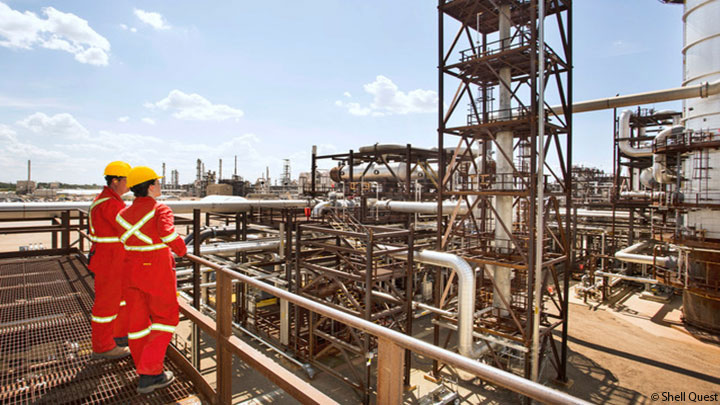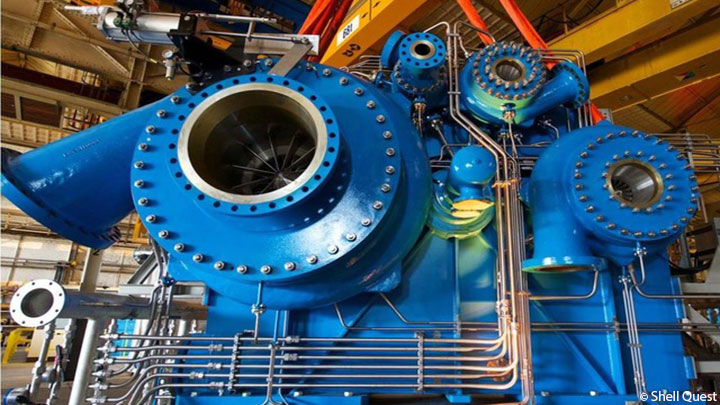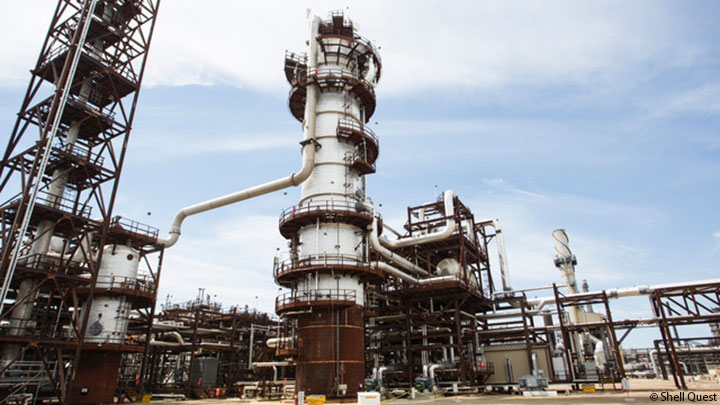Using natural formations for CO2 storage
To meet climate goals and to transform energy CO2 capture and storage is critical and necessary. Taking a page from Jules Verne, Shell Quest has discovered a unique safe solution for CO2 sequestration, and it’s been there for millions of years underground.
By Walter Foreman
To reduce greenhouse gas emissions, governments and corporations alike are more and more evaluating the potential of Carbon Capture and Storage (CCS). The technology describes the process of capturing carbon dioxide (CO2) and securely storing, or sequestering, it underground in depleted oil and gas fields or deep saline aquifer formations It is said to capture up to 90% of the CO2 emissions produced by consuming fossil fuels to generate electricity.
There are more than 20 large-scale CCS projects around the world, with close to 20% of those in Canada. CCS is expected to play a significant role in helping Canada to achieve its target of a 30% reduction in greenhouse gas emissions by 2030, which of course helps to slow climate change. Some of these facilities are capturing and storing amounts of CO2 annually equivalent to the emissions of 250,000 automobiles. But despite this success, CCS remains a little-known technology and is often overshadowed by other technologies such as renewable energy.
North America’s first commercial-scale CCS facility sits some 65 kilometers northeast of the Canadian city of Edmonton. The Shell Quest CCS facility in Fort Saskatchewan, Alberta captures and then sequesters CO2 underground in a geological formation known as the Basal Cambrian Sands.

Overlooking the Shell Quest facility at Fort Saskatchewan, the first large-scale CCS facility in North America.
At a depth of two kilometers, the Quest sequestration reservoir is significantly deeper than other hydrocarbon resources, and is distinctly different from any other kind of reservoir. The Shell Quest facility is removing CO2 from the process gas streams of the three hydrogen‐manufacturing units (HMUs) within the Scotford Upgrader, a facility which processes crude bitumen (extra-heavy crude oil) from oil sands into a wide range of synthetic crude oils. This is done by using amine technology, dehydrating and compressing the captured CO2 to a dense‐phase state for efficient pipeline transportation to the subsurface storage area. The amount of CO2 captured and sequestered at the Shell Quest facility represents 35% of all CO2 emissions at the Scotford Upgrader.
Storage space to spare
Sarah Kassam, a CCS Development Planner at Shell, has been excited by the performance of the reservoir, stating that it has performed above expectations by taking more CO2 than expected and at much lower pressures. In fact, the pressures have been so low that there’s been no visible result of it in any of the site’s overlying formations.
Since its opening in late 2015, the Shell Quest facility has sequestered five million metric tons of CO2 as of March 2020, a milestone that was reached six months ahead of schedule. The Canadian government has approved the facility to capture and store up to 1.2 million tonnes of CO2 annually.
According to Kassam, the amount of CO2 captured and sequestered by the Quest facility is greater than the amount of CO2 that would be collected naturally in an area the size of Alberta’s three main national parks – Banff, Jasper, and Waterton Lakes – covered entirely by trees. She notes that the reservoir has significantly more storage capacity than the 27 million tonnes of CO2 storage currently approved for the site. At its current expected annual rates of carbon capture, the Quest facility could continue operating until 2040.

Sarah Kassam, CCS Development Planner at Shell.
The facility’s success is a proof that CCS is a commercially viable way of mitigating carbon emissions
New depths, new challenges

The MAN RG 90-8 compressor provides higher carbon capture rates.
Kevin Kisor, an Application Engineering Manager at MAN Energy Solutions USA, explains the importance of compression in the CCS process. While CO2 is separated from the process gas stream at roughly atmospheric pressure, its transportation and eventual sequestration require the pressure to be increased to between 2,300 and 2,500 PSI. According to Kisor, prior to large-scale CCS projects, there was “little need for compressors that could handle such large volumes of gas compressed to such higher pressures.” But as CCS opportunities arose, and the volumes of captured gas increased, Kisor says “it became obvious that something different was needed.” He describes the MAN RG 90-8 compressor as being highly specialized and especially appropriate for this task. In Kisor’s words, it is the “ideal solution.”
CCS and energy transition
The Shell Quest facility demonstrates that proven technologies across the CCS industry can be used in unique and sustainable ways to reduce carbon emissions to the atmosphere. In particular, Kassam notes that carbon capture and storage need not happen
only at manufacturing sites like the Quest facility. Instead, the process can happen at other facilities such as cement plants or fertilizer plants which are emitting huge amounts of CO2.
Likewise, sequestration is not the only method of handling CO2. One of the unique characteristics of CO2 makes it an effective heat transfer fluid. As such, heat recovery systems using CO2 instead of steam are helping to make power generation plants more efficient. In this win-win scenario, CO2 is prevented from escaping into the air and is used to improve power generation efficiency, thereby reducing emissions even further.
Another use for captured CO2 is Power-to-Gas, which uses renewable energy to produce green hydrogen and in a next step CO2 can be added in a methanation process to create climate-neutral synthetic natural gas. It can then be used in several ways: as a transport fuel; to produce heat or to power industrial processes – just to name a few.

The Shell Quest CCS facility at Fort Saskatchewan is a commercially viable way to capture and store CO2.
About the author
Walter Foreman has been a North America correspondent since 2013, primarily covering medical and energy-related topics.
Explore more topics
MAN Energy Solutions is now Everllence.
We have adopted a new brand name and moved to a new domain: www.everllence.com. This page will also be relocated there shortly. We are working on shifting all pages to www.everllence.com.
